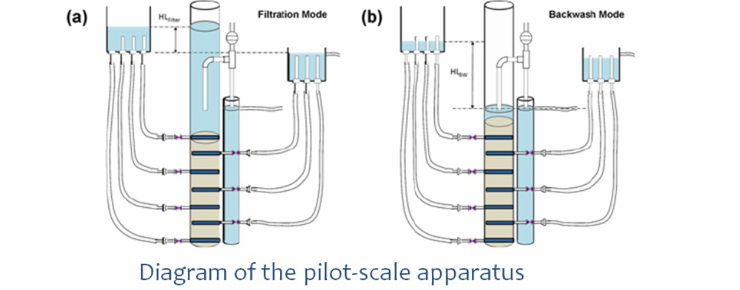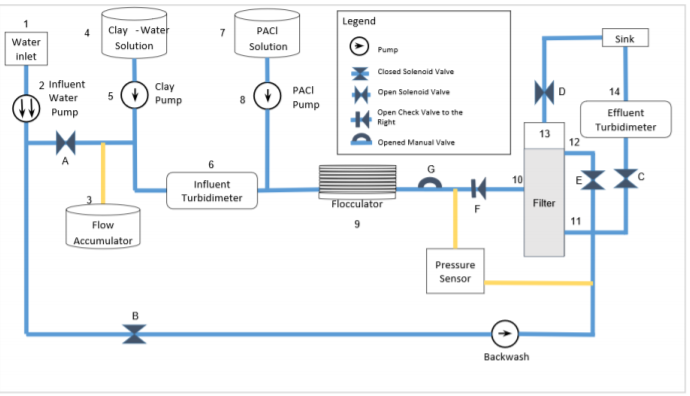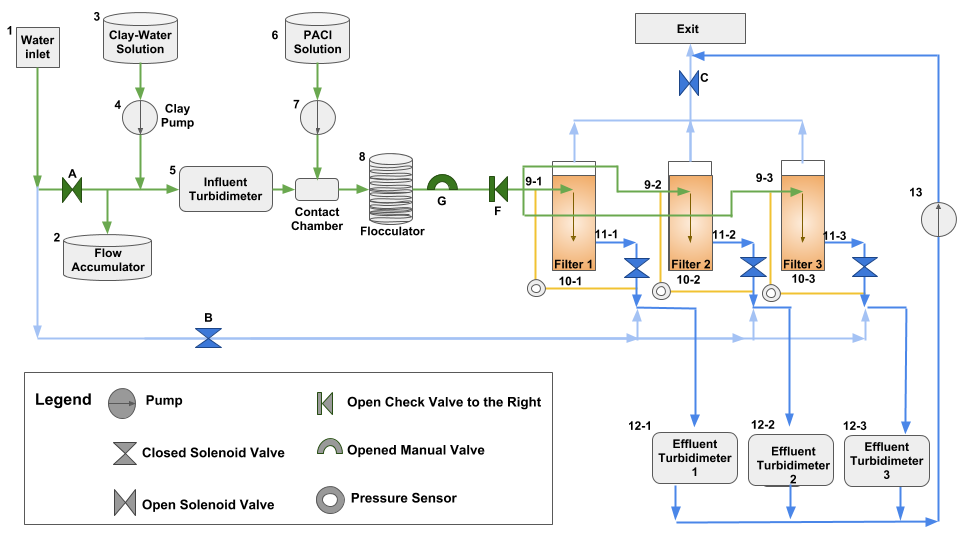Eva Johnson, Jordanna Kendrot, Bill Kuzara
Abstract:
The stacked rapid sand filter has been proven to be an alternative to traditional rapid sand filtration systems, and their efficiency makes them an appropriate component in gravity powered municipal-scale water treatment facilities. In this study, a pilot-scale apparatus has been create as a model of the hydraulic controls throughout a full-scale stacked rapid sand filter system. After installation and field testing at Tamara, it is vital for the backwash segment of filter operation to be controlled for a more efficient use of the system. The purpose of the current experimentation and lab procedures are to determine the optimal backwash cycle time necessary for the filter to remove as much particulate matter as physically possible with a short filter-to-waste cycle, thus reducing the overall rinse cycle time. Further research will be needed in determining how to lessen bubble formation, be it in the inlet box or filter itself, and in measuring the change in flow distribution throughout filtration and backwash. A four-layer rapid sand filter was created to test filter efficiency versus monetary compensation from using less sand in the filter box, but was shown to have less than optimum particulate matter removal when compared to the tested six-layer.













